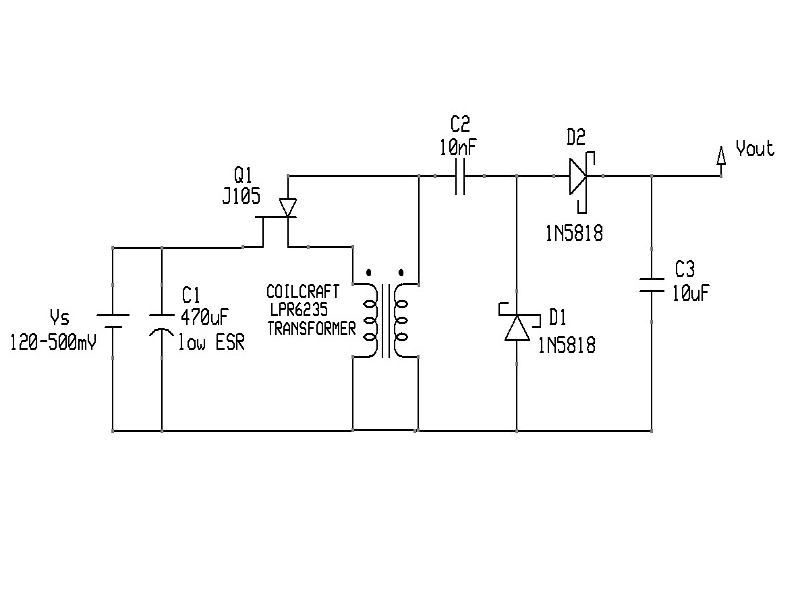Energy harvesting is all the rage, so bring on your lemon batteries, thermocouples, minuscule solar cells, dirt batteries, and tree batteries. This circuit can convert them all to useful voltages.
This is still a new, cutting-edge circuit. There’s only one commercial integrated circuit out there that will do the same thing: the LTC3108. But, if you build your own, it will be cheaper and maybe even more efficient.













